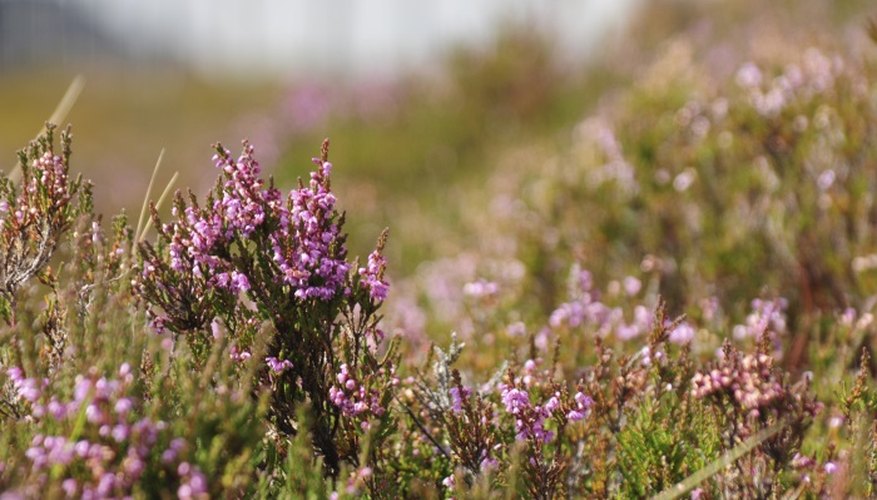Heathers are shrubby plants that have tiny budlike flowers. The plant is hardy and easy to grow in dry soils or even soggy wet areas like the Pacific Northwest. There are a variety of plants called heather in several different genera, but the most common one is the Scottish heather, or Calluna vulgaris. Heathers have a tendency to put out more leggy growth after blooming and look best if they are pruned annually. Rejuvenating a thick old heather requires severe pruning. It may take a season or two to come back strong, but it will have a more compact growth habit and reward you with more of the tiny flowers.
- Heathers are shrubby plants that have tiny budlike flowers.
- Heathers have a tendency to put out more leggy growth after blooming and look best if they are pruned annually.
Prune off the flowers after the plant has finished blooming. In colder climates, prune in early spring to prevent the forced new growth from getting damaged in winter.
Cut the stems back to where there is just green growth. This keeps the heather bushy. Take individual stems and remove to just below the old spent flowers. This will remove the new tuft of growth off the top, but it keeps the plant from getting leggy.
- Cut the stems back to where there is just green growth.
Shape the plant as you go. Use long-bladed shears to finish trimming the plant into a pleasantly rounded shape that will look nice in the garden until the fresh upright growth begins to return.
Rejuvenate a really neglected old plant by taking it all the way back. Normally, you would not cut into the woody part of a heather because it might not come back. On old woody plants with dead centres, it is best to remove the growth at the base or crown of the heather. Take a chance, it might come back.
Set up an annual pruning schedule that includes your heathers. They will look and perform best if you keep the old flowers trimmed off. You can take any of the peripheral stems that have started to root and plant them elsewhere to begin new plants.
